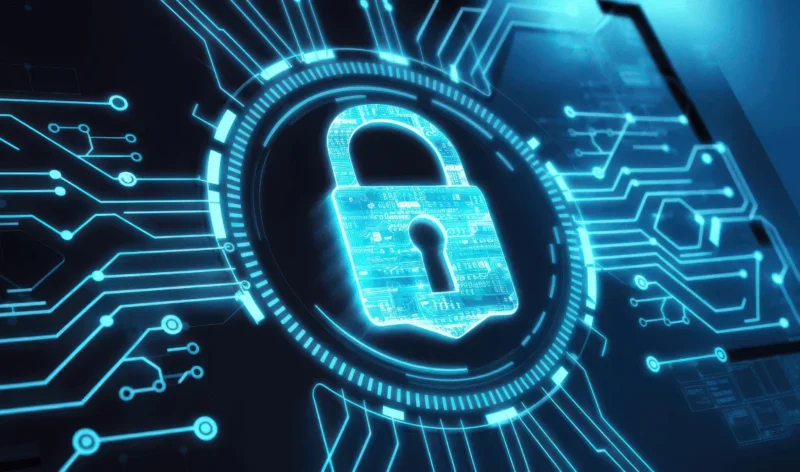Best Practices for Secure ITAD Services: Safeguarding Your Data Assets

Virtually every day, the news headlines feature stories about data breaches in which hackers have somehow gained access to confidential information. Sometimes, those involve sophisticated cyberattacks. In other cases, the breach is caused by a simple but critically important oversight. When companies dispose of unwanted IT equipment, they’re often letting sensitive and confidential information walk right out the door.
Secure IT Asset Disposition (ITAD) services protect your company’s confidential data from unauthorized access by ensuring that all of the information on your unwanted IT equipment is thoroughly and securely erased. Once that job is complete, they repurpose, recycle, or otherwise dispose of those devices. ITAD services help your organization to fully comply with data protection regulations such as GDPR and HIPAA, as well as to safeguard your reputation by preventing data leaks that could lead to financial loss, legal penalties, and loss of customer trust.
Electronic waste can also lead to environmental hazards, as harmful chemicals and materials can contaminate soil and water sources. Consequently, the lack of proper ITAD practices not only endangers data security, it also contributes to environmental damage.

Understanding ITAD Security Risks
Even after IT devices are decommissioned, residual data can remain on hard drives, SSDs, and other storage media, posing a data security risk if not properly sanitized. If you’re not dealing with a reputable ITAD company, the potential loss or theft of devices in transit to disposal facilities can also be a concern. Maintaining a sound chain-of-custody is critical in order to guarantee data security.
Data breaches, or even just non-compliance with data protection standards, can have severe consequences for organizations. Organizations may be subject to hefty fines, lawsuits, and legal fees. Reputational damage can erode customer trust and brand loyalty, leading to a loss of business and market share.
Data breaches can also disrupt operations, as resources are diverted to manage the incident and restore security. Non-compliance with regulations such as GDPR, HIPAA, or CCPA can lead to sanctions and increased scrutiny from regulatory bodies. Ultimately, a company’s failure to secure data during the ITAD process can undermine an organization’s overall cybersecurity posture and lead to long-term detrimental effects.
Key Components of Secure ITAD Services
Data destruction is a process that ensures that sensitive information is irretrievably eliminated. This can be accomplished in several different ways. Shredding involves physically cutting storage media, such as hard drives or tapes, into tiny pieces, rendering data recovery impossible. Degaussing uses powerful magnetic fields to disrupt the magnetic domains on storage devices like hard drives and tapes, effectively erasing all stored data. Secure data erasure systematically overwrites existing data on storage media with random data or patterns, making it unrecoverable.
Secure ITAD is governed by industry-specific certifications and standards aimed at ensuring data security and environmental responsibility. The e-Stewards certification, for example, is a global standard for responsible electronics recycling, emphasizing data protection, environmental sustainability, and ethical labor practices. ISO 9001, ISO 45001, ISO 14001 attest to excellence in quality management, employee safety, and environmental responsibility.
The best ITAD companies implement rigorous physical security measures to safeguard sensitive data and electronic assets. These measures often include secure, sealed vehicles to transport IT assets, controlled access to facilities, video surveillance, and employee background checks. These layers of security ensure that assets are protected from theft, tampering, or unauthorized access throughout the entire ITAD process.
Best Practices for Choosing an ITAD Provider
A thorough vetting process helps identify reputable providers with proven track records in secure data destruction and environmental responsibility.
When selecting a secure ITAD service provider, evaluate their certifications and compliance with industry standards such as e-Stewards and NAID. These ensure that the ITAD company follows environmentally sound practices and adheres to stringent data security protocols. Assess their data destruction methods, ensuring they offer services that include secure erasure and hard drive shredding. Ask about their processes for ensuring a secure chain of custody during the transportation of assets from your facility to their processing center.
In addition to asking about certifications and security measures, find out whether they offer flexible services such as on-site vs. off-site data destruction services. Ask how they verify the data destruction process, and how they handle the recycling or disposal of electronic waste. These questions help ascertain the provider’s commitment to security, compliance, and environmental responsibility, ensuring a reliable and trustworthy partnership.

Implementing a Secure ITAD Strategy
Integrating secure IT asset disposition services into your overall data security policy requires the creation of clear procedures and protocols for decommissioning and disposing of IT assets. Your policy should outline steps for securely transporting and processing retired assets and ensuring that all data is irreversibly destroyed. Regular audits and updates to the ITAD processes are essential to adapt to evolving security threats and regulatory requirements, ensuring ongoing protection of sensitive information.
Employee training and awareness programs are also important. Educate your employees on the importance of data security, the risks associated with improper IT asset disposal, and the organization’s ITAD policy. Regular training sessions, workshops, and awareness campaigns can help reinforce best practices and ensure that employees are vigilant about security protocols. By fostering a culture of security awareness, organizations can mitigate the risk of data breaches and ensure compliance with data protection regulations.
By consistently updating ITAD processes and fostering employee awareness, organizations can enhance their data protection strategies and minimize the risk of data breaches.
Secure ITAD services are a critical component of any company’s data security plan. By ensuring that all data is irreversibly destroyed, secure ITAD services prevent unauthorized access and support your organization’s compliance with data protection regulations.
Responsible businesses must mitigate the risks associated with improper IT asset disposal. Follow best practices by selecting a reputable ITAD provider, establishing clear policies and procedures for asset disposal, and regularly training employees on the importance of secure ITAD. By integrating these practices into your operations, you can enhance your data security, ensure regulatory compliance, and even return some money to your bottom line.
Want to learn more? Contact one of NCS Global’s IT asset disposition experts today.